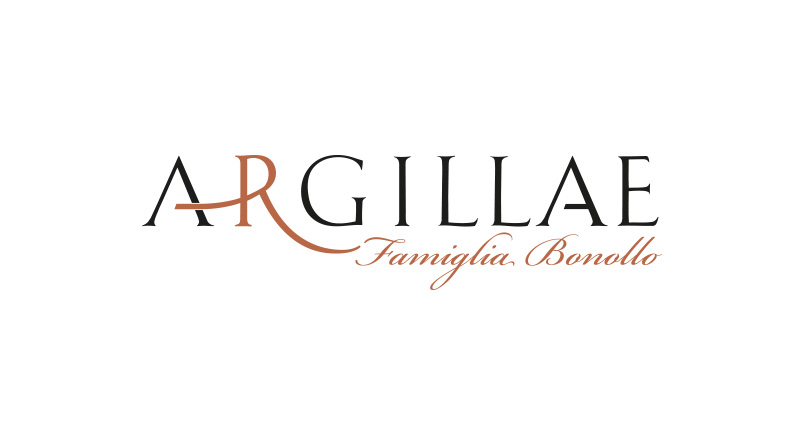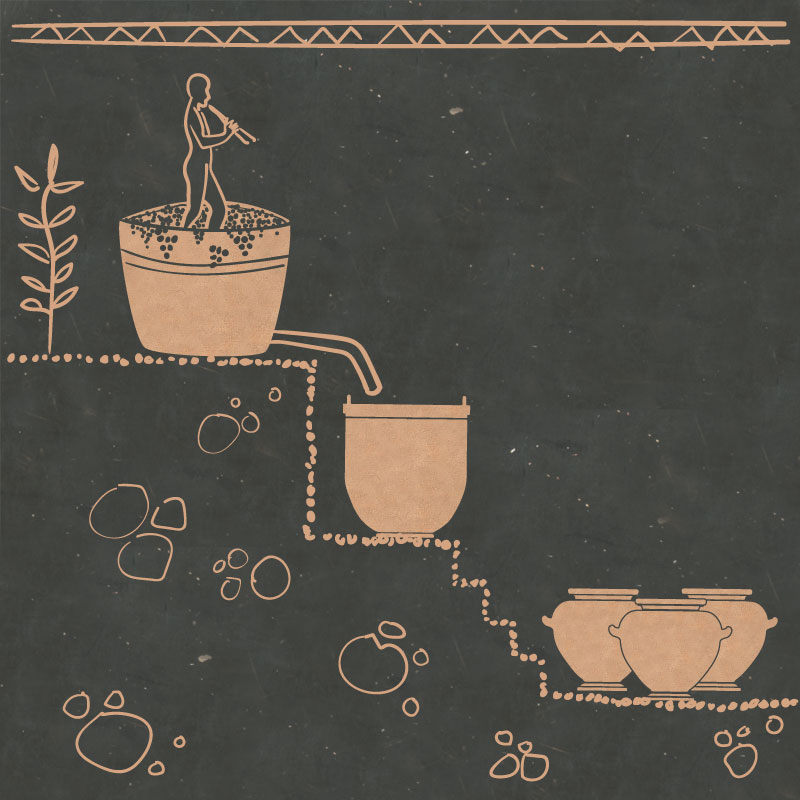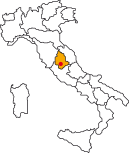WINE PRODUCTION ACCORDING TO THE ETRUSCANS
During the Etruscan civilization (8th-3rd centuries B.C.), Orvieto experienced a period of great splendour. And it is thanks to the Etruscans that the winemaking art started in the town.
The Etruscans excavated caves in the tufa rock cliff, and developed a winemaking system the result of which was a drink with peculiar organoleptic characteristics:it was aromatic, fragrant and golden yellow in colour.
The grapes were crushed on the ground floor (first level) and the grape must was channelled through clay pipes to the lower areas (second level) where fermentation occurred. After racking, wine was moved to a still lower floor (third level), suitable for wine maturation and long-term storage.
The Etruscans used to harvest the grapes when they were completely ripe, after which they carried them into the cellars by using wooden boxes carried by pack animals and placed them all in truncated cone-shaped casks. Once a cask had been filled, a barefoot man would climb over it and crush the grapes in order to obtain the must. Water was then added to the crushed grapes inside the cask. The must obtained was only half of the weight of the grapes, fermentation would occur within five -eight days and a final tasting in small containers would be carried out by a selection of experts to verify the final quality.
Once fermentation was completed, wine was drawn off and poured into a barrel so that it would come out of the tap free of dregs. A further stage of vinification would then take place: a man would get inside the cask and start to make must out of the grapes that had not been completely crushed or were laying amidst the grape skins, seeds and pulp. Finally, after racking stages had been completed, a B quality wine would be obtained. To this purpose, it is worth having a look at a jug showing the wording "VINO B" (B WINE) now kept in the Museum of Medieval Majolicas in Orvieto's Via della Cava.
The Etruscans set up a flourishing wine trade, with adventurous expeditions into Northern Europe; so did the Romans who, during their domination over the city, would send wine to Rome via the river port of Palianum where several wine jars have recently been found. .
During the Etruscan civilization (8th-3rd centuries B.C.), Orvieto experienced a period of great splendour. And it is thanks to the Etruscans that the winemaking art started in the town.
The Etruscans excavated caves in the tufa rock cliff, and developed a winemaking system the result of which was a drink with peculiar organoleptic characteristics:it was aromatic, fragrant and golden yellow in colour.
The grapes were crushed on the ground floor (first level) and the grape must was channelled through clay pipes to the lower areas (second level) where fermentation occurred. After racking, wine was moved to a still lower floor (third level), suitable for wine maturation and long-term storage.
The Etruscans used to harvest the grapes when they were completely ripe, after which they carried them into the cellars by using wooden boxes carried by pack animals and placed them all in truncated cone-shaped casks. Once a cask had been filled, a barefoot man would climb over it and crush the grapes in order to obtain the must. Water was then added to the crushed grapes inside the cask. The must obtained was only half of the weight of the grapes, fermentation would occur within five -eight days and a final tasting in small containers would be carried out by a selection of experts to verify the final quality.
Once fermentation was completed, wine was drawn off and poured into a barrel so that it would come out of the tap free of dregs. A further stage of vinification would then take place: a man would get inside the cask and start to make must out of the grapes that had not been completely crushed or were laying amidst the grape skins, seeds and pulp. Finally, after racking stages had been completed, a B quality wine would be obtained. To this purpose, it is worth having a look at a jug showing the wording "VINO B" (B WINE) now kept in the Museum of Medieval Majolicas in Orvieto's Via della Cava.
The Etruscans set up a flourishing wine trade, with adventurous expeditions into Northern Europe; so did the Romans who, during their domination over the city, would send wine to Rome via the river port of Palianum where several wine jars have recently been found. .





